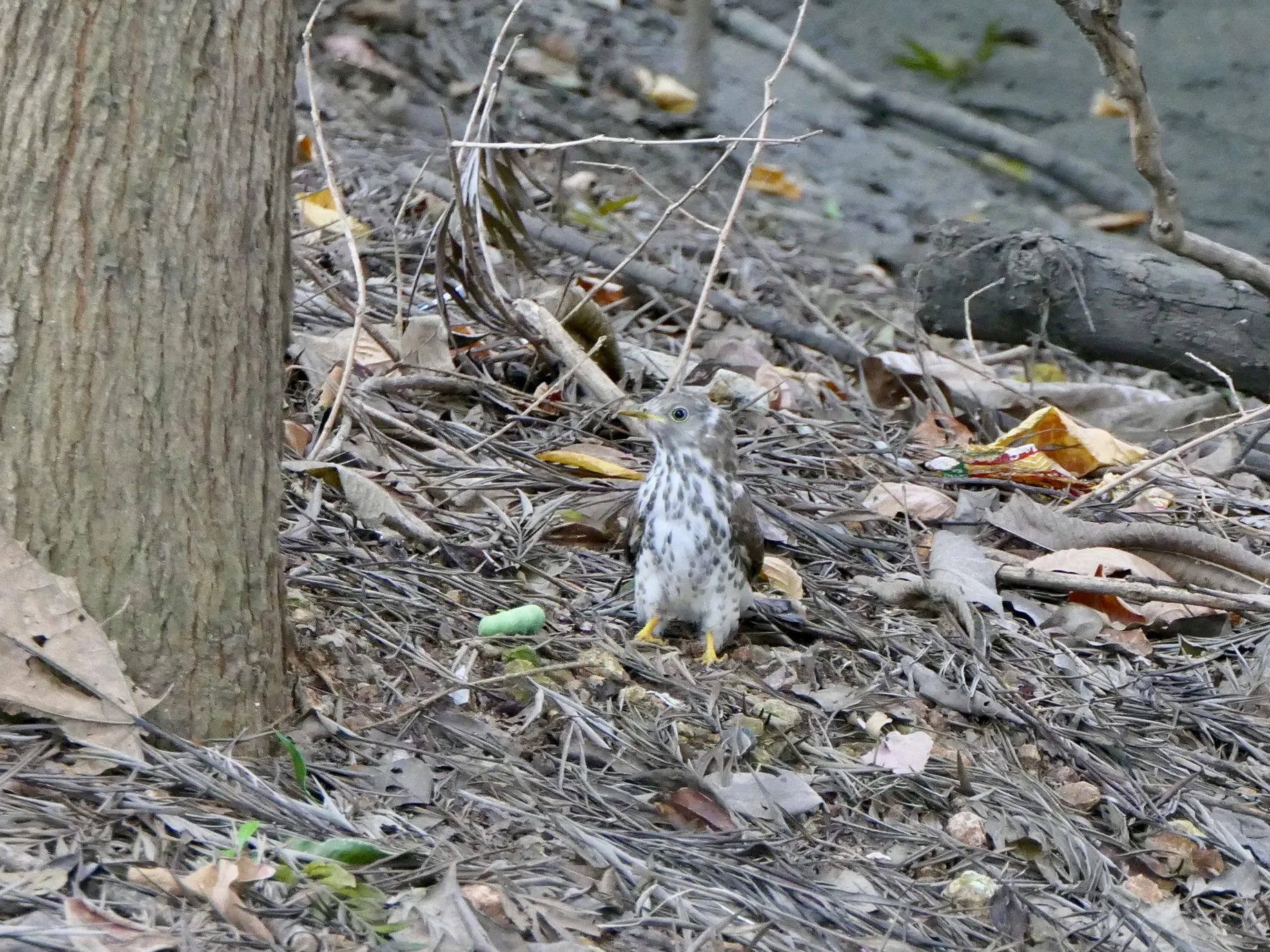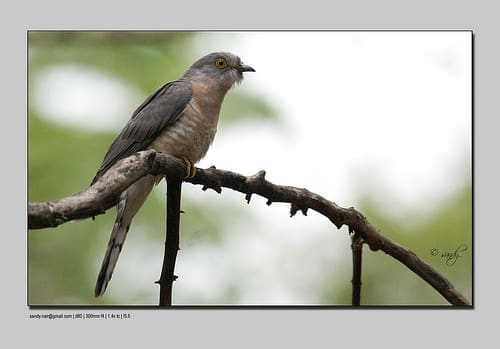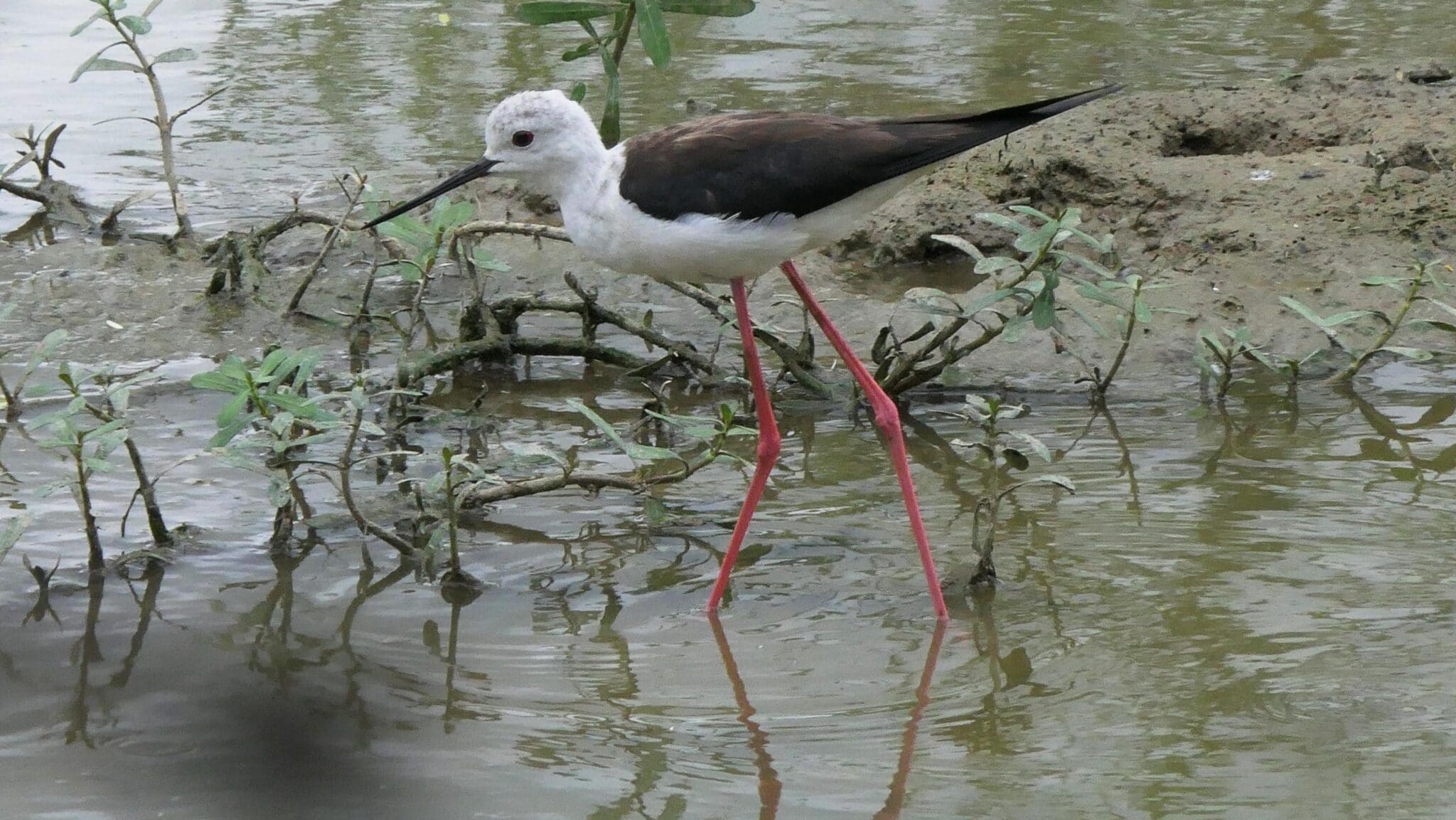Don’t bite off more than you can chew, they said. Don’t play with your food, they said. Take a big bite of life, they said. Don’t speak with your mouth full, they said. That’s a lot of contradictory advice, isn’t it? But no one ever said any of that to the hapless young Common Hawk-cuckoo as it was brought up by its foster parents and spent most of its infancy stuffing its mouth — or rather, having its mouth stuffed.
Just a few weeks ago, at our neighbourhood lake, we chanced upon this young cuckoo — also known by its not-so-flattering alias, the Brainfever Bird (more on that if you read on) — trying to swallow a freshly caught caterpillar for breakfast.
A breakfast that never quite happened. Because… anticlimax!
Backstory — a cuckoo’s quest for breakfast
Who teaches young cuckoos to hunt, anyway? Clearly, these skills were new and untested. Until a few days earlier, this oversized baby had been driving a flock of Yellow-billed Babblers to exhaustion with its endless demands for food.
Flashback to a few weeks prior: a female hawk-cuckoo found an unattended babbler nest, quietly slipped in one of her own eggs, and vanished — well, continued on her migratory journey. Sometimes, female cuckoos lay eggs in more than one host nest, ensuring a better chance of their bloodline’s survival (should the hosts wise up to their ploy and reject an egg). The cuckoo’s egg closely resembles the babbler’s and also hatches earlier. As soon as the little cuckoo came into the world, it wasted no time ejecting the babbler eggs from the nest — a phenomenon called egg-tossing. It also mimicked the begging behaviour of the babbler chicks, ensuring constant and undivided attention.
How brood-parasites like cuckoos fool host birds time and again is one of the wonders of avian evolution and biology!
How host birds can be fooled time and again is one of the wonders of avian evolution and biology. It is also a continually evolving survival strategy that is mind-boggling at many levels — and there’s plenty of fascinating research on the subject that can easily plunge you down a rabbit hole.
Now finally rejected by its weary foster parents (who have probably gone into therapy), the young Common Hawk-cuckoo had to fend for itself. It chased after caterpillars, trying to woo them into becoming breakfast. Baby insect (not exactly — insect metamorphosis is complicated and doesn’t equate to infancy in birds) versus baby bird. After a few one-sided matches, the score was stacked heavily in favour of the caterpillars.

The cuckoo battles its breakfast
Now, take a moment to consider the cuckoo’s intended meal. By the looks of it, this was probably an Oleander Hawk-moth caterpillar — a smooth, plump, green customer that looks a bit like Thomas the Tank Engine wearing blue-tinted sunglasses and a grumpy expression. Not a hairy caterpillar, though many cuckoos do have a weakness for those zingers.
As I watched, the young cuckoo dipped from its perch into the leaf litter, sought out the pea-green caterpillar, and tried to swallow it. Failing the first time, it tried again. And then again, and again. Until we had one very irritated caterpillar wriggling and twitching as it avoided being eaten. Finally, the bird gave up and flew away to lick its wounded pride. But then again, research tells us that many cuckoos have tiny brains — and perhaps they don’t overthink all that much!
Somewhere back in the malarial swamp of time, a febrile Englishman probably lay awake on a charpoy, fighting off chills as the interminable subcontinental summer wore on. On that humid moonlit night, a Common Hawk-cuckoo sang in a frantic, feverish crescendo: brain fever, brain fever. Not once, but again. And again and again. Until it struck the Englishman, between shivers, to dub the singer the Brainfever Bird.
Brain fever — right back at ya!
Just saying. In any case, it’s the bird’s three-note call — a shrill, repetitive cry rising in pitch to a feverish crescendo — that inspired its colonial-era name. The call, often heard through the hot, sleepless nights of the Indian summer, was said to drive listeners to the edge of “brain fever” itself.
In due course, one hopes, the bird learned from its mistakes. Hunger is a powerful motivator, isn’t it?
- TL;DR: Going cuckoo – when breakfast gives you brain fever! - November 1, 2025
- TL;DR – Why did the wintering Grey Wagtail sing? - February 9, 2025
- Pranayama with Bar-headed Geese – A Pilgrimage in Gadag - January 10, 2025









